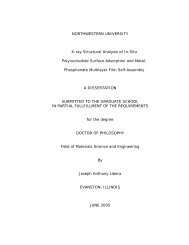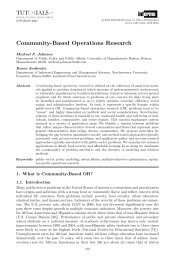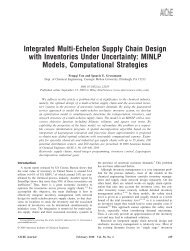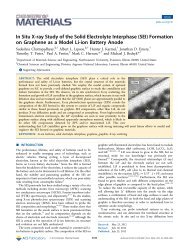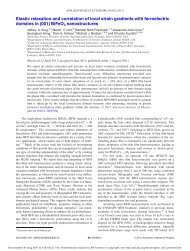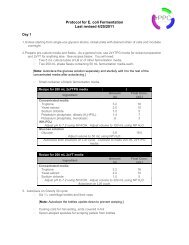Flash Reduction and Patterning of Graphite Oxide ... - Jiaxing Huang
Flash Reduction and Patterning of Graphite Oxide ... - Jiaxing Huang
Flash Reduction and Patterning of Graphite Oxide ... - Jiaxing Huang
Create successful ePaper yourself
Turn your PDF publications into a flip-book with our unique Google optimized e-Paper software.
<strong>Flash</strong> <strong>Reduction</strong> <strong>and</strong> <strong>Patterning</strong> <strong>of</strong> <strong>Graphite</strong> <strong>Oxide</strong><br />
ARTICLES<br />
Figure 1. A graphite oxide (GO) paper (a) can be instantaneously reduced (b) upon exposure to a photographic camera flash. The grids in the background<br />
are1mm× 1 mm. The flash reduction <strong>of</strong> GO was evident by the dramatic changes in color (a, b), water contact angle (insets), (c) TGA, <strong>and</strong> (d) FTIR. In<br />
c, d, f, the blue lines correspond to GO <strong>and</strong> the red lines correspond to the flash reduced GO (r-GO). (e) Cross-sectional view <strong>of</strong> a GO paper showing large<br />
thickness expansion after flash reduction. Only the right half <strong>of</strong> the GO sample was flashed. The left part <strong>of</strong> the picture shows the cross-sectional view <strong>of</strong><br />
the light brown colored GO film. The thickness increased by almost 2 orders <strong>of</strong> magnitude, resulting in a very fluffy <strong>and</strong> potentially high surface area film.<br />
(f) The lack <strong>of</strong> a graphitic peak in the XRD pattern <strong>of</strong> the reduced material suggests disordered packing <strong>of</strong> the r-GO sheets, consistent with the large volume<br />
expansion observed in e.<br />
broad peak centered at 22.5° emerged, which is at a slightly<br />
lower angle than the peak for bulk graphite. The lack <strong>of</strong> a<br />
graphite peak suggests that the r-GO sheets stayed exfoliated<br />
<strong>and</strong> disorderly packed despite their strong π-π interaction. 23<br />
This is not surprising since flash irradiation causes microscopically<br />
explosive reduction <strong>of</strong> GO that occurs in situ in solid state.<br />
The density <strong>of</strong> flash-converted graphene films were calculated<br />
to be around 0.14 g/cm 3 , which is 6% <strong>of</strong> the value for bulk<br />
graphite. The conductivities <strong>of</strong> flash-reduced GO films were<br />
measured to be around 1000 S/m using their much exp<strong>and</strong>ed<br />
thicknesses in the calculation. Note that the conductivity <strong>of</strong><br />
reduced GO heavily depends on the processing history <strong>of</strong> the<br />
GO precursor, the reaction conditions, <strong>and</strong> densities <strong>of</strong> the final<br />
products. Although much higher values <strong>of</strong> conductivities have<br />
(22) Dikin, D. A.; Stankovich, S.; Zimney, E. J.; Piner, R. D.; Dommett,<br />
G. H. B.; Evmenenko, G.; Nguyen, S. T.; Ru<strong>of</strong>f, R. S. Nature 2007,<br />
448, 457–460.<br />
(23) Fujimoto, H. Carbon 2003, 41, 1585–1592.<br />
been reported for GO coatings <strong>of</strong> tens <strong>of</strong> nanometers in thickness<br />
annealed at high temperature (>500 °C), 12,15 for GO papers<br />
prepared under similar conditions, flash reduction produces<br />
products with comparable conductivities to those from chemical<br />
or thermal treatments. 7,9,13,14,24-26 The open structure <strong>of</strong> the<br />
flash-reduced GO thin films should make them useful for<br />
applications favoring high surface area. 25<br />
To underst<strong>and</strong> the photothermal heating mechanism, we<br />
investigated the photo energy input from the camera flash unit<br />
<strong>and</strong> the thermal energy needed for heating GO films to thermal<br />
reduction temperature (Figure 2). The photo energy emitted by<br />
the flash lamp used for Figure 1 <strong>and</strong> Video S1 was measured<br />
to be around 1 J/cm 2 at close distances (



